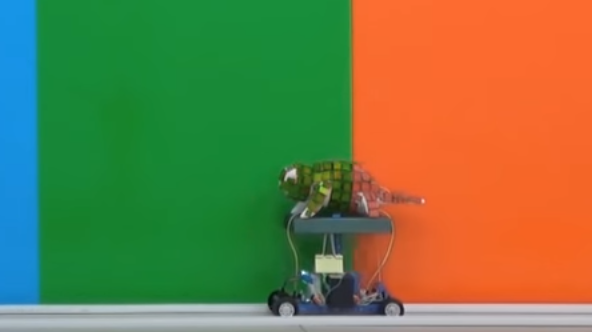
As robots become more bio-inspired, it was only a matter of time before some engineers gave them the ability to camouflage with their environment like a chameleon.

Researcher Gouping Wang from Wuhan University in China teamed up with researchers from the State Key Laboratory for Optoelectronics Materials and Technology and the Georgia Institute of Technology to develop such as robot.
According to the team, not only are bio-inspired robots becoming of interest, but there has been a growing interest to get robots to blend in with their surroundings. However, it’s actually quite challenging to develop an artificial, active camouflage that responds quickly to the color change in the full-visible range.
According to the team’s paper, “Mechanical Chameleon through Dynamic RealTime Plasmonic Tuning“, published in ACS Nano:
“Importantly, our approach permits real-time light manipulation readily matchable to the color setting in a given environment. We utilize this capability to fabricate a biomimetic mechanical chameleon and an active matrix display with dynamic color rendering covering almost the entire visible region.”
According to New Scientist, the displays in the background are glass sheets that have holes in them, measuring 50 meters in diameter. They then added a gold coating over the holes, as well as electrolyte gel and a silver coating. The color changes when light hits the gold and produces “ripples of electrons”. Modifying their properties can produce the different colors.
For now, the robotic chameleon can only camouflage against only three primary colors (red, green, and blue), but the team feels its technology can also interface with a complex environment and provide a new approach for artificial active camouflage. They can further develop the robot by using an integrated machine-vision system to capture and simulate entire color patterns of the environment and then facilitate the color-changing process, so that the chameleon can completely merge with its surroundings.
For the complete story, as well as a video showing the color change in action, visit New Scientist.

Comments are closed, but trackbacks and pingbacks are open.